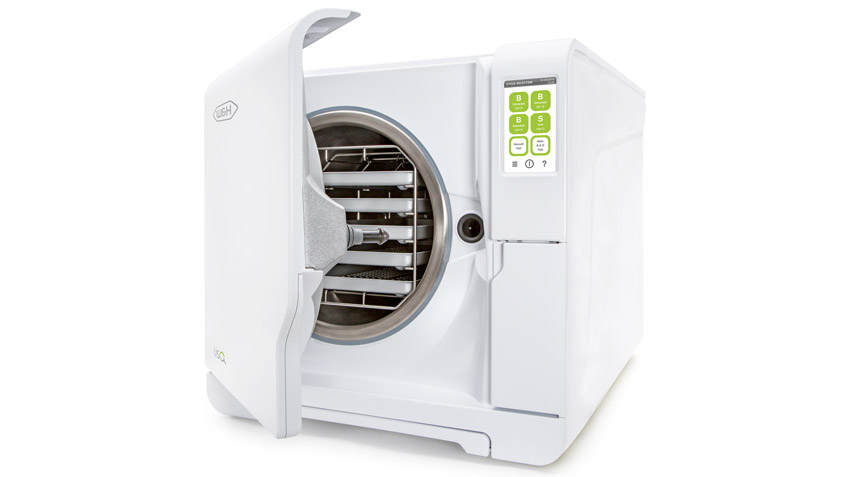Is your dental practice supporting a green recovery?
Featured Products Promotional FeaturesPosted by: Dental Design 9th April 2021

When the COVID-19 pandemic initially peaked in early 2020, many countries worldwide were forced into lockdown in an attempt to curb the spread of the virus and save lives. The UK itself has had to face multiple lockdowns both nationally and regionally since then, with on-going restrictions limiting travel and human activity in general. The positive environmental effects of this have been evident, particularly in terms of reducing carbon emissions and minimising pollution.[1] However, these effects will be short-term if we return to life as it were pre-pandemic, which is why there is now greater emphasis on a “green recovery” from the COVID-19 crisis.
Indeed, the pandemic presents a unique opportunity for further investment in green solutions, whereby environmental sustainability, inclusivity and resilience become the means by which the UK’s struggling economy is revived and its climate targets met. Many campaigners, economists and academics have long been calling on policymakers to prioritise a variety of green measures such as those that support zero-emission technologies and infrastructures, reduce fossil fuel subsidies, prevent the construction of new fossil fuel plants, and promote the restoration of natural ecosystems.[2]
Interestingly, some people in the UK would be prepared to continue maintaining many of the lifestyle changes enforced by lockdowns to help tackle the climate emergency.[3] The green recovery could cut expected emissions in 2030 by up to 25%, whilst boosting the chances of keeping temperature rises below 2°C by up to 66%, according to the UN Environment Programme’s Emissions Gap Report 2020.[4] Every industry must adapt if they are to get ahead of environmental concerns and bounce back quicker and stronger from COVID-19. Dentistry has a vital role to play in minimising its environmental impact, especially as it is traditionally known for its high consumption of energy and other resources.
The day-to-day running of a dental practice certainly necessitates the use of various electrical dental equipment, copious amounts of water, and numerous disposable products ranging from gloves, masks and patient bibs, to suction tips, saliva ejectors, needles and paper. Much of these products do not decompose easily, if at all, and therefore pose an environmental risk if not disposed of appropriately. In fact, dental waste is a significant contributor to the problems stemming from single-use plastic products, the lifecycle of which – including production and distribution – comes with a heavy environmental burden.
Forward-thinking dental teams believe they have a professional obligation and an ethical responsibility to transform dentistry from an environmentally damaging practise to a sustainable one. The question that many clinicians are asking is what can they do to minimise waste and conserve energy and other resources, whilst ensuring they are still able to deliver the high quality care that patients expect? There are a variety of steps your practice can take to transition to a greener business. For instance, going paperless can save you and your team time, thus making the business more efficient and productive. Your practice can also switch from halogen to LED lighting, in addition to recycling and reusing items – infection control protocols permitting, of course.
Digital technology can make a huge difference in helping your practice reduce its carbon footprint. Remote systems, for example, can be used for patient consultations and on-going treatment monitoring to limit the number of in-practice patient appointments required. Moreover, the latest intraoral scanners, CAD/CAM systems, milling machines and 3D printers can support practices in overcoming the environmental challenges of manufacturing and transporting analogue impressions, as well as various restorative solutions.
 Practices can even take advantage of robust decontamination equipment that optimises energy consumption in the most cost-efficient way. The Lisa vacuum steriliser from W&H, for instance, is capable of processing hollow or porous instruments, and offers cutting-edge Eco Dry+ technology to ensure an S class cycle time of 13 minutes and B class cycles from 28 minutes. Lisa’s intelligent Eco Dry+ technology adapts the drying time to the mass of each load, thereby accelerating cycle times and extending the lifespan of dental instruments with minimal energy consumption. This makes Lisa the ultimate “green” solution for streamlined sterilisation.
Practices can even take advantage of robust decontamination equipment that optimises energy consumption in the most cost-efficient way. The Lisa vacuum steriliser from W&H, for instance, is capable of processing hollow or porous instruments, and offers cutting-edge Eco Dry+ technology to ensure an S class cycle time of 13 minutes and B class cycles from 28 minutes. Lisa’s intelligent Eco Dry+ technology adapts the drying time to the mass of each load, thereby accelerating cycle times and extending the lifespan of dental instruments with minimal energy consumption. This makes Lisa the ultimate “green” solution for streamlined sterilisation.
The importance of preserving our natural world has become much clearer in the context of COVID-19: failure to protect the environment has increased the risk of infectious disease emergence, which – as we have experienced – can lead to immense socio-economic damage. On the road to recovery, the decisions we make now will either lay the foundations for sound, sustainable and inclusive growth, or give way for polluting emissions to make the planet and our society more vulnerable. Dental practices are encouraged to take action today for a brighter, greener future.
To find out more visit www.wh.com/en_uk, call 01727 874990 or email office.uk@wh.com
[1] Rume, T. and Islam, S. M. D-U. (2020) Environmental effects of COVID-19 pandemic and potential strategies of sustainability. Heliyon. 6(9): e04965. DOI: 10.1016/j.heliyon.2020.e04965.
[2] UN News. (2020) ‘Green recovery’ from COVID-19 can slow climate change: UN environment report. Available at: https://news.un.org/en/story/2020/12/1079602. [Last accessed: 07.01.21].
[3] Harvey, F. (2020) UK public ‘supports green recovery from coronavirus crisis’. The Guardian. Available at: https://www.theguardian.com/environment/2020/jun/23/uk-public-supports-green-recovery-from-coronavirus-crisis. [Last accessed: 07.01.21].
[4] UN Environment Programme. (2020) Emissions Gap Report 2020. Available at: https://www.unenvironment.org/emissions-gap-report-2020. [Last accessed: 07.01.21].








